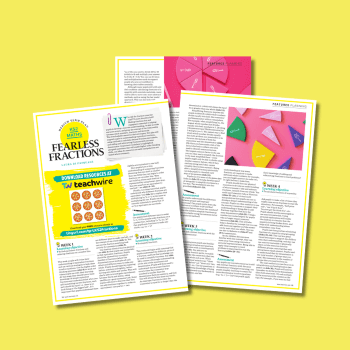Zipped file containing 4 PDF files and a PowerPoint presentation
KS2
Years 5-6
Making fractions fun and engaging is essential in helping pupils to develop a concrete understanding, be able to make and solve errors, and grasp the concept of the relationship between whole numbers, fractions and decimals.
This fractions KS2 medium-term plan will help guide you through the teaching of fractions, from comparing and ordering them to being confident in interpreting remainders.
The KS2 worksheets provided will support pupils in understanding equivalent fractions, using methods to calculate decimal fraction equivalents, and adding and subtracting fractions with the same denominator. Important vocabulary is highlighted alongside questions that will enable higher order thinking skills. Ideas for resources or math manipulatives are linked where necessary.
Fractions KS2 learning objectives
- To find equivalent fractions and ordering fractions on a number line.
- To simplify fractions.
- Add and subtract fractions with the same denominator.
- To calculate fractions of a quantity.
- To recognise and write decimal equivalents.
- To compare decimals up to two decimal places.
Laura Di Pasquale is a primary teacher, Apple learning coach and micro:bit champion based in Glasgow.














